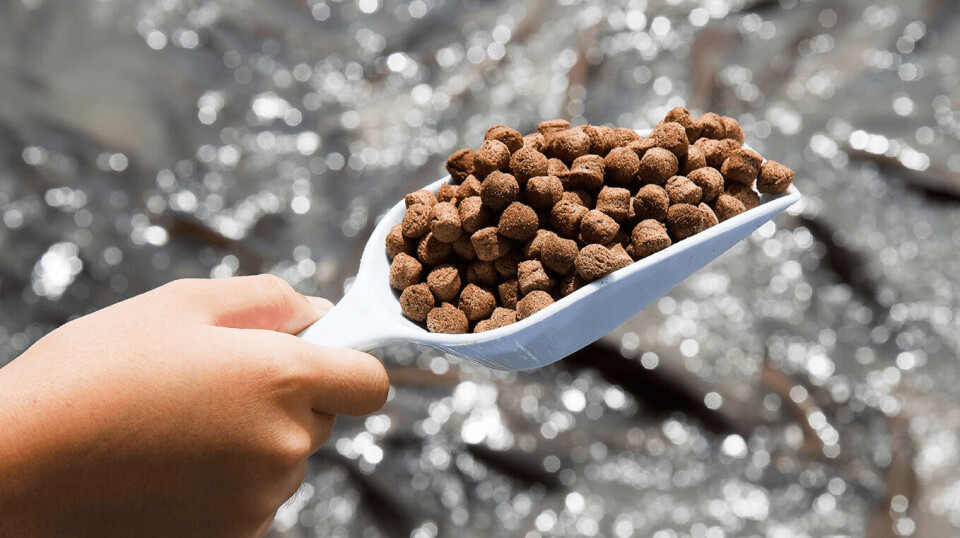
Salmon farmers defend responsible use of wild fish in feed
90% of forage fish could go directly to people claims NGO
Scotland’s salmon farming sector has responded to criticism of the industry’s use of fishmeal and fish oil in feed by UK-based NGO Compassion in World Farming (CiWF).
The campaigning organisation last week published a peer reviewed research paper which estimates that between 1.1 and 2.2 trillion individual wild fish are caught globally each year, and that around half – mainly the small ones – are used to make fishmeal and fish oil.
The CiWF, which wants more fish left in the sea, adds that 70% of fishmeal and 73% of fish oil is used in aquaculture to feed farmed fish and crustaceans.
“The sheer scale of the use of small yet sentient fishes to feed farmed animals, mostly farmed fish, is another powerful argument for catching fewer fishes for reduction to fishmeal and oil,” said CiWF research manager Phil Brooke, who co-authored the report. “It would be much more efficient – and would benefit animals, people, and our planet – if we left more of them in the sea and most of those still caught were fed to people.”
'440 small fish per salmon'
CiWF says an estimated 440 wild-caught fish are required to rear a single farmed salmon to 5.5 kg and approximately 90% of the wild fish used in feeds could be fed directly to people.
“This is inefficient – fed to salmon, only 28% of this high-quality protein (editor’s note: all protein in the feed, including marine ingredients) ends up in human food. This can negatively impact food security, often in already vulnerable communities,” adds the NGO.
Dr Iain Berrill, head of technical at trade body Salmon Scotland said: “Our sector uses only a tiny fraction of the fish meal and oil that’s produced, and we only use marine ingredients derived from wild fish that are responsibly sourced from managed fisheries.
Efficient converter
“Scottish salmon is an efficient converter of feed with a feed conversion rate of around 1:1.1, meaning it takes just over 1kg of feed to produce 1kg of food.
“Alternative marine ingredients, including trimmings from other species, reduce our use of fishmeal and oil from wild sources to produce millions of healthy nutritional meals every year.”
The proportion of marine ingredients used in salmon feed has fallen substantially over the last three decades as the industry’s growth has outpaced the availability of fishmeal and oil. According to the annual salmon farming handbook produced by the industry’s biggest player, Mowi, salmon feed contained 59% fishmeal and 24% fish oil in 1990. In 2022, those proportions were reduced to 17% and 13% respectively in Norway, and to 6% and 10% respectively in Chile.
About a third of the fishmeal and oil used in salmon feed comes from offcuts of fish caught for human consumption.
Up-to-date information
Unlike other NGOs that have based criticisms of salmon farming on information that is years out of date, Brooke told Fish Farming Expert that CiWF’s calculations were in line with more recent figures.
The calculations are based on the following assumptions:
- Harvest weight of 5.5kg (Scottish Government data)
- Feed conversion ratio of 1.2
- Fishmeal percentage 12%
- Fish oil percentage 10%
- Percent fishmeal and oil from trimmings – 33.33%
- Fishmeal conversion factor – 22.5% (i.e. 100g wild fish reduced to 22.5g fishmeal)
- Fish oil conversion factor – 5%
“Our fishmeal assumption in fish diets is intermediate between Norway and Chile,” said Brooke. “Our fish oil assumption is equal to Chile and lower than Norway.”
The big five
Asked how consumers could be persuaded to move from the “big five” species – cod, haddock, salmon, tuna, and prawns – that make up 80% of the UK market, Brooke said: “This is of course challenging, though we are not just thinking of the UK. The species used to feed farmed fish are listed in the paper and include, for example, Atlantic herring, South American pilchard, and capelin, which are eaten by people.
“Species such as sardinella, caught of West Africa, are of course traditionally eaten by people as well as being converted to fishmeal and oil for export.”
CiWF says it has long argued that a sustainable aquaculture sector would farm lower in the food chain and would not be dependent on fishmeal and oil from purpose-caught wild fish.
Humane slaughter
As well as a reduction in the number of fish caught, it also wants those that are caught to be humanely killed, as they are in salmon farming.
“Although the sentience of fish is widely accepted, wild-caught fishes are generally killed without stunning and suffer very poor welfare for extended periods both during and after capture,” says CiWF.
Brooke agreed with Fish Farming Expert’s contention that humane stunning was more difficult to achieve on a fishing boat than at a harvest station but pointed out that approximately 20 trawlers and 30 Danish seiners, liners, or other vessels are using an electrical stunner to immobilise their catches.
“According to anecdotal feedback from fishermen, other advantages of using the system are improved health and safety conditions (safer and easier catch handling and bleeding of individual fish) as well as higher fish processing speeds,” added Brooke.
“The challenge is to ensure that the equipment is designed and used to meet welfare as well as other requirements. We believe that fishing boats should use stunning equipment designed for fish farming that is adapted for fishing boats. Stunning parameters should be used in line with the latest science to ensure an immediate stun and prevent recovery, in line with OIE (World Organisation for Animal Health) recommendations for killing of farmed fish. Small scale fishers may be able to use manual methods of stunning and killing including manual percussion and spiking.”























































